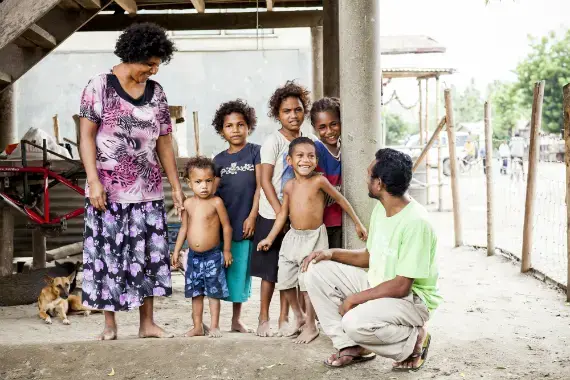Current situation
The population of Papua New Guinea is estimated to reach 13 million people in 2032 at its current annual population growth rate of 3.1 per cent. According to the 2011 Census, Papua New Guinea has a “youth bulge” with 58 per cent of its 7.3 million inhabitants being under the age of 25, one of the highest proportions in the Pacific.
The rapid population growth is putting strain on service delivery and infrastructure. For example, some children cannot go to school as there are insufficient classrooms to cater for them. As a result, about 30 per cent of school aged children, or 600,000 children, do not go to school at all, and when they do, many drop out and do not finish even basic primary education.
Whilst population data is available in PNG, it is often not analysed and under-utilized by policy makers. The National Statistical Office (NSO) conducted the National Census in 2011, but data from the census was not published and released to the public until January 2014, three years later due to a lack of capacity.
Key interventions
UNFPA’s Population and Development program is primarily focused on:
- strengthening national capacities to identify and address population and development issues, including data collection and analysis; and
- the integration of population variables in planning frameworks. The Department of National Planning and Monitoring and the National Statistical Office has been supported by UNFPA to develop the National Planning Policy 2015-2024 and analyse the 2011 Census data, including the upcoming tabulation of the population monographs.


